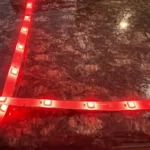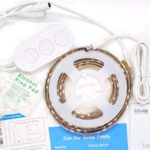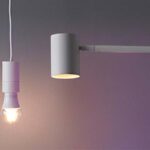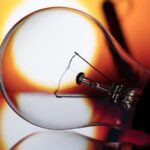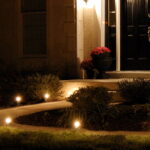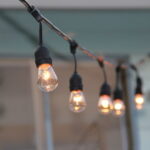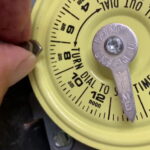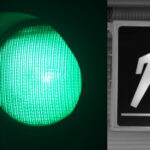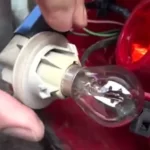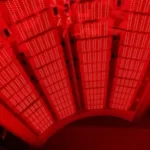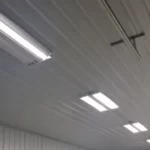Do LED Lights Burn Out? Why? – the Ultimate Guide
Yes, LED lights do burn out. Several things can cause LED lights to burn out. The light-emitting diodes (LEDs) may malfunction, causing them to first dim before going out completely. However, unlike many other kinds of artificial lighting, they do not burn out the conventional way.
However, you should be aware that they do eventually cease to function. To help you prevent such a catastrophe, read the following advice.
LED light burnout may be a concern, but what are the signs? What should you do if the light in your house stops working?
The lifespan of an LED light can range from 25000 to 50000 hours, depending on its quality. But they can also fizzle out too soon. Due to their high sensitivity to voltage fluctuations and spikes, they are susceptible to malfunctioning.
Table of Contents
Burn-out of LED Lights
You now have to go to the store to buy new light bulbs, which means that not only was your party interrupted, but also that it was. And then, soon enough they will burn out again and the cycle will repeat. But it’s not necessary. Just consider never again needing to change your bulbs.
Despite sounding like science fiction, this is a possibility thanks to LED lighting. What exactly is an LED light, and what major benefits do they offer? Discover how the LED light bulb will make your upcoming party a huge success by reading on.
What is An LED?
LED stands for Light Emitting Diode. This essentially means that the bulb is built differently than other, more traditional bulbs. Small wire filaments inside of incandescent bulbs are heated until they begin to glow. The tungsten wire in halogen lights is burned into a gas, which heats the bulb.
A long, gas-filled tube is given an electrical charge in compact fluorescent lighting, which results in the emission of light. But in an LED the light is produced by a chip which is controlled by a driver and other electrical components.
Why is An LED Different?
One of the best features of an LED light bulb is that it doesn’t produce nearly as much heat as incandescent bulbs. However, compared to an incandescent bulb, the amount of heat produced when the bulb is electrified is significantly less. Whatever heat the bulb does generate is transferred through a heat sink, which absorbs the heat and disperses it evenly throughout the bulb, keeping it much cooler.
Are LED Light Bulbs Efficient?
When compared to other types of bulbs, LED bulbs are very efficient. One of an LED bulb’s most crucial characteristics is its efficiency. These bulbs will cost the consumer significantly less over the course of the bulb’s lifetime because they are significantly more efficient. Since a more efficient light will use less electricity, which results in less wear and tear on the bulb, this efficiency is also directly related to the lifespan of the bulbs.
What Happens When An LED Light Burns Out?
If you’ve ever wondered how LED lights work, you’ve probably wondered how they produce heat. LEDs are actually made up of individual Light Emitting Diodes (LEDs), each of which has a lifespan of over 100,000 hours. The entire bulb stops working when one LED malfunctions. What transpires, however, if an LED light burns out? Here are some important details. Let’s examine some of the most typical reasons why LED lights fail.
One of the most frequent causes of burned-out LED lights is high voltage. The home power grid may present a challenge because LEDs perform better at lower voltages. A specific voltage is required for LEDs to operate, and the led driver’s job is to transform that voltage into the proper direct current for the LED chip. However, when an LED fails, it’s possible that the LED driver didn’t adjust in time, leading to the LED’s premature burnout. A bad batch of lightbulbs is yet another potential reason.
Inadequate wiring, incompatible dimmer switches, and improper installation are additional reasons why LEDs fail. In contrast to incandescent lights, LEDs do not burn out, but they can overheat and lose brightness or functionality. Corroded capacitors or drivers are among the internal component issues some users report. You can identify the root of the problem and replace the LED by looking into these problems.

Why Your LED Light Bulbs Are Burning Out?
Use the Wrong Dimmer Switches
When LED bulbs are used in incompatible dimming circuits, it is one of the most frequent causes of LED bulb premature failure.
First, keep in mind that LED bulbs are not by default dimmable. However, the reverse is not true, so make sure before you install a new bulb. Dimmable LED bulbs can be used in non-dimmable circuits.
Second, the low wattage demands of LEDs weren’t taken into consideration when designing more traditional leading-edge dimmer switches. Change to a trailing edge dimmer switch instead.
Thirdly, burnout may result from dimming circuits that are picky about their minimum and maximum load. Your bulbs will last a lot longer if you make sure your switch isn’t being overloaded or underloaded.
Simply divide the maximum wattage of the switch by the wattage of the bulbs you intend to use to determine the number of bulbs you can use at once.
Consult an electrician to get your dimming circuits LED ready, then look through our selection of LED-compatible dimmer switches!
Overheating
Since LED bulbs don’t produce as much heat as other types of bulbs, they can be more susceptible to overheating. They might burn out too quickly as a result of this. Keep your bulbs cool to extend their lifespan.
First, make sure the bulbs you’re using don’t fit the fitting too tightly. It doesn’t mean you should use that bulb just because the base fits! Check that the bulbs you use will work with any enclosed fittings you may have.
In addition, be careful not to use more power than the light’s maximum wattage. Given that LEDs use such little power, this is a less likely cause of failure. However, as low-energy lighting gains popularity, more fixtures are reducing their maximum load to match, so it’s a good idea to double-check.
Bad Connections
Make sure the bulbs aren’t screwed in too tightly or too loosely, especially when using E14 or E27 bulbs. To make sure the contact points are secure if it’s too loose, just give it one more twist.
The socket tab may have unintentionally been compressed if the bulb was screwed in too firmly. Investigate the socket’s metal tab. You can either replace the fitting if it isn’t angled between 20 and 30 degrees, or you can bend the tab into position with a pair of pliers. Before doing this, make sure the power is turned off at the breaker.
If the fitting is older, the connection points may have deteriorated over time, in which case it is necessary to purchase a new one.
Home Voltage is Too High
There might be an issue with your mains power supply if all of your bulbs are going out too quickly or are too bright. Any more than this will cause any bulb, not just LEDs, to burn out quickly. In the UK, this should be around 230v at 50Hz.
Contact a licensed electrician to check the voltage and get in touch with your electricity provider if you think this is the problem.
A Bad Batch
The possibility of a defective light bulb evading quality assurance or being harmed in transit is always a remote possibility.
We have a 14-day return policy to protect you if you’ve tried all the solutions above but your bulb is still burned out. Our bulbs are covered by comprehensive warranty policies for long-term peace of mind, so you can be sure they are long-lasting.
How Long Should LED Lights Last?
Every day, the average person spends three hours using the light in their living room. It’s almost eight years and ten months at this point. A 30,000-hour LED light can be used for 23 years if you use it for three hours each day. What if, however, using less light will allow you to save money? The good news is that there are a variety of LED options for living rooms that have a lifespan of much longer than seven years.
In comparison to conventional incandescent, halogen, or CFL lighting, an LED light has an average lifespan of about 50,000 hours, or about 50 times longer. When used twelve hours per day, an LED with a 50,000-hour rating will last approximately eleven years, and if used eight hours per day, it will last seventeen years. The lifespan of LED lights can vary depending on various factors, including the type of environment they’re placed in.
Read more How Long Do LED Light Bulbs Last?
Do LED Lights Dim With Age?
Yes. Over time LED lights will begin to shine less brightly. Because the bulb’s parts will eventually deteriorate and begin to perform less effectively, they will do this. The bulb will produce less light as its internal components deteriorate.
What is the Expected Life of An LED?
Hours of use are used to calculate an LED bulb’s lifespan. A certain type of light bulb, the incandescent bulb, has a lifespan of 1,000 hours. Many LEDs have a life of close to 50,000 hours. What makes this lifetime different than the lifetime for the incandescent bulb is that the lifetime of the LED light is not measured until it burns out.
Instead it’s measured until the light produces approximately 30% less light. Therefore, it would take nearly 150,000 hours, or nearly 33 years of 12 hours a day operation, for an LED light to operate until it stops shining altogether. While it is not advised, it is possible for bulbs to stay unchanged for that long.
Can LED Lights Be Left on 24 7?
One of the questions people have is: “Is it possible to leave LED lights on all the time?” Leaving LED lights on all the time may help us save money on energy and lessen our carbon footprint, but that does not necessarily make them environmentally friendly. Instead of letting a light burn and become too hot, consider why you would leave it on all day. You might be surprised to find that LED lights can be left on twenty-four hours a day without losing their luminescence.
While LED lights can be left on all day without harm, they shouldn’t be left on all night. The majority of expertly made LED lights can run continuously for up to seven days. This is so that they don’t burn or overheat since LEDs produce little heat. Additionally, because LEDs don’t use filaments, they don’t run the risk of igniting and starting house fires.
Do LED Lights Burn Out?
This is a common question consumers ask but you are in luck LED lights cannot burn out because there is no use of heat as in incandescent bulbs, or gases to burn out or wires to burn up.
There are no components in the LED bulb that are intended to burn up because the LED’s microchip only produces a small amount of heat, which the heat sink removes. As previously mentioned, the LED bulb will eventually become less bright, but it will take a lot longer than it would with other types of bulbs.
Can LED Lights Become Faulty?
Even though LED lights cannot burn out, they can occasionally develop defects. The other electrical parts could eventually fail, even though it’s uncommon for the LED itself to become faulty. After that, you must change the fixture or bulb.
How to Dispose of LED Light Bulbs?
It’s crucial to contact your neighborhood recycling and waste removal services before replacing an LED bulb. While parts of an LED light can be recycled in some places, in others, LEDs will be disposed of just like regular waste. In the event that a company does not give its contact details to a person directly, the municipality will be able to give you those of the companies.
Check for How Do LED Light Bulbs Work?
Why Are My LED Lights Not Lasting?
The fact that LEDs are connected to devices that demand more wattage than they were intended to handle is one factor in their short lifespan. If you notice that your LEDs are flickering, the wattage is probably the cause, and you can solve the issue by changing the bulb or inspecting the socket. A higher voltage than necessary results in buzzing in LEDs, which is another frequent cause of failure. The electronic components of the LED are vibrating, which is the cause of this.
You should adhere to the DLC’s recommendations in order to extend the life of LED bulbs. Products that are qualified satisfy particular performance standards, use premium materials, and include warranties. The DLC-qualified products cut down on cool loads, electrical shocks, and replacement times. Visit the DLC website to learn more about LED bulbs. Read the DLC label and keep an eye out for the letter of certification when purchasing LEDs.
Conclusion
Just picture yourself hosting a game night for some friends. This time, when it’s your turn to throw the dice, you get the ideal number, which allows you to advance your piece to home plate and win the match. Yes, you had to go to the store to buy new light bulbs, but since you bought LED light bulbs, you can play games without worrying that your light bulbs will suddenly go out.




![9 Best Boat Dock Lighting Ideas In 2022 [Updated]](https://www.totallylight.com/wp-content/uploads/2022/09/9-Best-Boat-Dock-Lighting-Ideas-In-2022-Updated-150x150.jpg)


